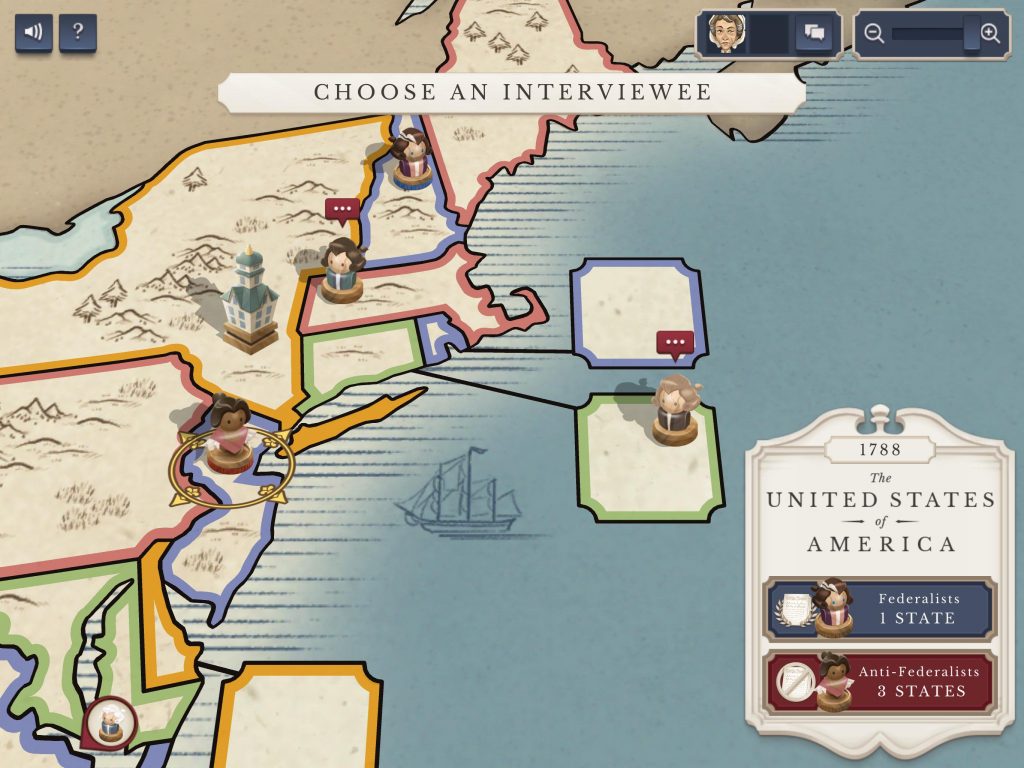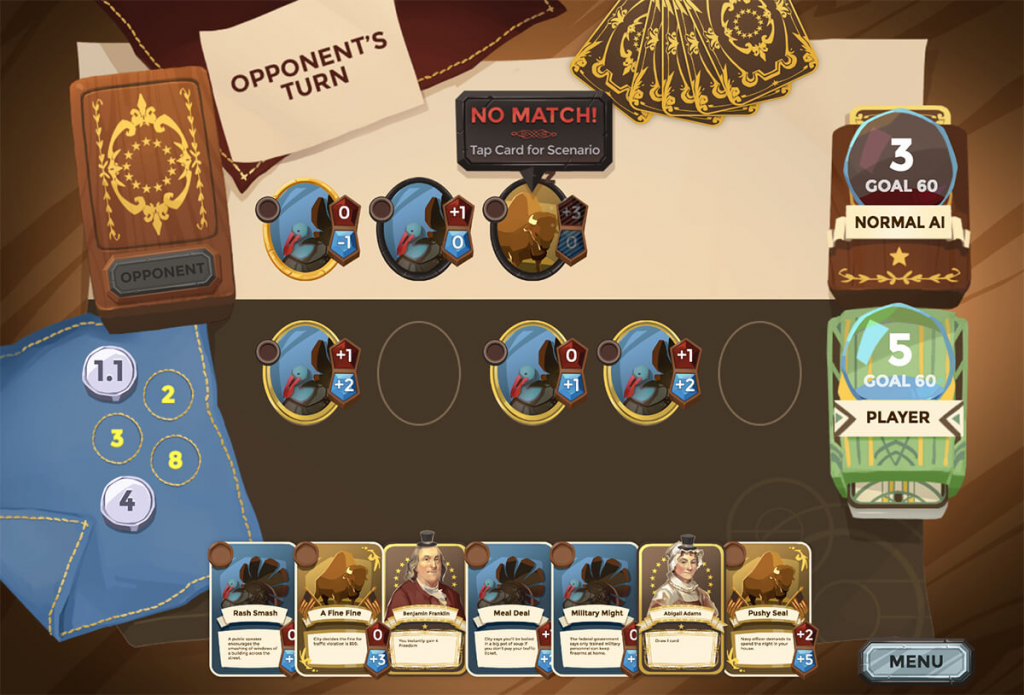Thanks to programs like the gaming industry’s Play Apart Together initiative, people around the world are coming together in solidarity – by staying as far away from each other as possible. Physical distancing is as widespread as it is critical during this global pandemic, but even in less exceptional times, the way we work and learn has become increasingly remote, enabled by video conferencing, cloud storage, the IoT, and so on. This new modality imposes some significant logistical challenges and restrictions, and carries a strong need for tools and content that can bridge the gaps between the benefits of physically co-located learning and the requirements of remote instruction.
When it comes to remote learning, digital games and interactives have an incumbent advantage. Whether you’re teaching elementary students or training a workforce, digital educational games offer easy access, robust interactivity, co-learning opportunities, and a chance to demonstrate knowledge – and that’s just the beginning. Read on below for some examples of the ways that digital games can enable and augment remote instruction:
Access

We’ll start with the most obvious advantage – games provide easy access to remote learning. One requirement shared by digital games for both remote and in-class learning is the need to be browser-based. In schools, this is driven by the ubiquity of Chromebooks and other lower-end hardware that would be unable to accommodate hundreds of installs of large, graphically demanding games. The benefit to those learning at home is that they correspondingly do not need an expensive computer, and can access that same web-based content just as easily as they could in school. This is why Filament primarily develops our game projects in Unity (and to a lesser extent, HTML5), both of which are powerful tools for creating web-based content. A platform like iCivics is a conclusive demonstration of the accessibility of web-based content – with more than 100 million lifetime plays, educators and learners clearly have no problem getting into those games. Being the savvy digital learning content providers that they are, iCivics even offers a Remote Learning Toolkit for Educators and Families, replete with tools and tips to help folks get started with remote learning through digital games.
Co-Learning

Perhaps the greatest challenge of remote instruction and learning is the technical absence of co-learning, a phenomenon which has numerous documented benefits. Per the National Education Association, cooperative learning “typically results in (a) higher achievement and greater productivity, (b) more caring, supportive, and committed relationships, and (c) greater psychological, health, social competence, and self-esteem.” Obviously, advantages like this are sorely missed in remote instruction scenarios. While likely not achieving the full fidelity of a true in-person learning experience, digital educational games can provide an approximation of co-learning through web-based multiplayer experiences, whether synchronous or asynchronous. Annenberg Classroom’s That’s Your Right is one such game – using a simple matchmaking system that does not collect personally identifiable information, players can challenge each others’ knowledge of the United States’ Bill of Rights through a multiplayer card game played in realtime.
Intrinsic Motivation
In a lecture at Indiana University way back in 2012, game-based learning titan James Paul Gee was quoted as saying “People can’t learn when there’s nothing at stake.” This is as true now as it was then, and indeed as true as it has been for all human history. The human mind demands to be told “Whyyy?” – this question is aimed like a dagger at the heart of every mundane, drill-based, ostensibly pointless exercise we encounter as learners. Games are uniquely positioned to solve this problem by providing a learner with a semiotic domain that simply bubbles with intrinsic motivation. To elucidate this somewhat esoteric turn of phrase, I turn again to James Paul Gee:
“A semiotic domain recruits one or more modalities (e.g., oral or written language, images, equations, symbols, sounds, gestures, graphs, artifacts, and so forth) to communicate distinctive types of messages. By the word ‘fluent’ I mean that the learner achieves some degree of mastery, not just rote knowledge. Here are some examples of semiotic domains: cellular biology, postmodern literary criticism, first-person shooter video games, advertisements, Roman Catholic theology, modernist painting, midwifery, and so on and so forth through a nearly endless and motley list.” (Learning in Semiotic Domains: A Social and Situated Account, Gee, 2001)
As Gee points out, games (whether it’s a first-person shooter or a Montessori math game about chickens on a plane) are semiotic domains that create their own hermetically sealed sense of meaning and purpose, which helps to lift us out of the grim drudgery of rote learning. For an example of how this works, think of the game of chess. In normal circumstances, the act of moving wooden pieces around a wooden grid would provide very little excitement in and of itself. However, when paired with the rules of chess and a savvy opponent, the act of moving those little wooden pieces around can become breathlessly tense and exciting. For remote learning, these kinds of engagement and motivation are doubly important for mitigating diminished pedagogical structure.
Pedagogical Design
In terms of game-based learning research texts, few are as robust as “Digital Games, Design, and Learning: A Systematic Review and Meta-Analysis” by Clark et al. This meta-analysis agglomerated a diverse array of games and learning studies and drew conclusions that have proved portentous in the years subsequent to the study’s release. One conclusion worth noting for remote instruction is the differentiating impact of pedagogical design. Across 20 studies in the 2014 meta-analysis by Clark et al., students playing games with design additions informed by learning theory outperformed students playing standard versions of the same games (SD .37).[1] In studies that allowed students to play a game more than once, learning outcomes were significantly higher when students played multiple times, even though many games allow students to practice a skill several times during a single play session. [1,2]
This suggests that it’s important to choose games that have been designed for learning, and to incorporate them into lessons in a way that gives learners the opportunity to reflect and incorporate what they’re learning between gameplay sessions. While there’s no true replacement for a real live human instructor, games with pedagogical design can help teachers and parents by emphasizing “child-directed” mechanics that help to mitigate reduced instructor presence or availability in remote learning circumstances.
Embodied Cognition
To paraphrase the phenomenon that noted intellect Andy Dwyer once observed about gases, instruction fills the volume of whatever container it’s in. When I was a student in school during the previous century, instruction took place in a “container” which was specifically a classroom filled with rigidly arranged rows of small desks. The instruction I received in that container was likewise quite rigidly arranged. Remote instruction facilitated by learning games offers an opportunity for learning in digital “containers” that can expand the possibility space for learning outcomes. In a situation where remote learning is required, the real-world learning environment might not be designed to facilitate instruction, so a digital alternative that is fully oriented towards a specific learning outcome is the next best thing.
Beyond a simulated learning environment, games provide learning content that fully embodies the intended learning outcome. It’s the difference between telling someone verbally how to drive a car, versus letting them sit behind the wheel and figure it out for themselves. For evidence look no further than Driver’s Ed – a standard form of instruction in which we allow real 15-year-olds to operate real cars on real public roads. This speaks volumes to our society’s recognition of the superiority of hands-on instruction. When you’re learning remotely, it’s not likely that you have a real chemistry or robotics lab at your disposal, but you can bridge that gap with a game like our upcoming robotics game, RoboCo. This game allows players to engage with the real process of robotics, learning about physics, engineering, and future-facing creativity and problem solving skills, all from the comfort of a home computer.
Safe Training
Remote learning and work isn’t just for students. Indeed, I am writing this blog article from the comfort of my home right now. I would describe my current attire as business casual. Or maybe casual casual. For facilitating the actual logistics of work, the modern professional’s toolset is deep – with video conferencing software, smart devices, and cloud storage, you’re basically at work wherever you are! Whether that’s a comfort to you or a harbinger of the inevitable and total destruction of work-life balance, it’s objectively true that it’s never been more convenient to be productive remotely. But modern work life isn’t all about execution – we’re all learning and training as we go, whether we’re just starting out in a role or taking our current position in a new direction. Digital educational games can help here, too.
For example, in the Mental Health Association of Maryland’s Engage with Older Adults, players learn how to better understand and successfully interact with elder populations in simulated elder care scenarios. Players interact with a sequence of clients, listening to their problems and attempting to understand and meet their needs. Learners are given a safe space to try and even fail to provide proper elder care without causing distress or even trauma to actual elder clients. Additionally, players are able to practice engaging with elderly or immune-compromised clients without exposing them to potential contagions.
Simulated Non-formal Education Spaces
If the world transitioned to a reality in which all education is facilitated digitally, online, and from the home, perhaps one of the saddest casualties of that sea change would be the time-honored tradition of the field trip. Museums and zoos and aquariums provide incredible opportunities for hands-on learning, immersive experiences, co-learning, discovery, creativity – the list goes on forever. While nothing truly compares to standing face-to-face with the towering Tyrannosaurus Rex fossil in the American Museum of Natural History, digital educational games can once again provide us with an approximation of an informal education destination. For those of us who can’t make it out to the museum, the Chicago Field Museum’s Mission to the Mesozoic is available online for free to satisfy our emergent dinosaur safari needs.
Another example is our own Breaking Boundaries in Science, an interactive virtual reality celebration of history’s most influential women scientists. Designed and available for the Samsung Gear and Oculus Go, Breaking Boundaries immerses players in the life and times of famous figures like Jane Goodall, Marie Curie, and Grace Hopper. In this VR-enabled museum-like experience, players explore each scientist’s real-life work environments and gain an intimate knowledge of their lives and achievements through fully voice-acted vignettes that are steeped in historical context. Breaking Boundaries is a great example of the transportative properties of both game-based learning and virtual reality, a medium that provides learning affordances which are worthy of a blog article unto themselves.
This concludes our extensive-but-by-no-means-comprehensive roundup of why digital games support remote instruction. If this article has piqued your interest as an educator or parent, check out our round-up of free games and learning resources that you can use at home today. If you’re a content provider that wants to learn more about how we make games for remote instruction, drop us a line for a free consultation!
References
- Clark, D., Tanner-Smith, E., Killingsworth, S . (2014). Digital Games, Design and Learning: A Systematic Review and Meta-Analysis (Executive Summary). Menlo Park, CA: SRI International. Accessed September 10, 2014. http://www.sri.com/work/publications/digital-games-design-and-learning-systematic-review-and-meta-analysis-executive-su
- Wouters, P., van Nimwegen, C., van Oostendorp, H., & van der Spek, E. D. (2013, February 4). A Meta-Analysis of the Cognitive and Motivational Effects of Serious Games. Journal of Educational Psychology, 105(2), 249-265.